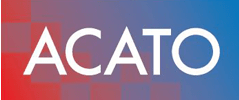Understanding ISO 27001 Security Policy Requirements Clearly

ISO 27001 Security Policy Requirements Explained: Key Clauses, Policies, and Implementation
Unclear security policies expose organizations to compliance failures and data breaches. This guide clarifies ISO 27001 security policy requirements by breaking down Clause 5.2 and Annex A 5.1, detailing required policy types, offering a customizable template, outlining implementation and review best practices, and highlighting certification benefits. Readers will gain actionable insights into core clauses, master and topic-specific policies, template structure, communication and review cycles, and the business value of ISO 27001 compliance.
What Are the Core ISO 27001 Information Security Policy Requirements?
ISO 27001 mandates an Information Security Policy that Top Management endorses and maintains under Clause 5.2 and Annex A 5.1. These provisions establish governance, scope, objectives, and roles to anchor an effective ISMS. By defining policy purpose and review mechanisms, organizations ensure consistent direction and continual improvement.
What Does ISO 27001 Clause 5.2 Require from Top Management?
Clause 5.2 requires Top Management to establish, approve, and communicate an Information Security Policy that aligns with the organization’s context and strategic direction. This policy sets security objectives, assigns roles, and demonstrates leadership commitment—a critical step that embeds information security into corporate governance and risk management. Establishing this commitment leads to formalizing policy scope and objectives under Annex A controls.
How Does Annex A 5.1 Define Policies for Information Security?
Annex A 5.1 specifies that organizations must maintain documented policies covering their security framework, covering asset classification, acceptable usage, and roles and responsibilities. These documented policies guide consistent implementation of controls, ensure accountability, and provide a basis for audit and review cycles. Having structured policies establishes a clear framework for topic-specific controls and continual refinement.
Why Is an Information Security Policy Essential for ISMS Compliance?
An Information Security Policy underpins risk management by defining one organization-wide approach to confidentiality, integrity, and availability. It formalizes stakeholder expectations, supports resource allocation, and drives training and awareness programs. Embedding policy into the ISMS fosters a culture of security and ensures that risk treatment plans align with organizational objectives, paving the way for robust compliance.
Which ISO 27001 Policies Are Required and What Are Their Purposes?

ISO 27001 requires both a Master Information Security Policy and supporting topic-specific policies to cover all Annex A control areas. The table below outlines key policies, their purpose, and primary objectives.
| Policy Type | Purpose | Objective |
|---|---|---|
| Master Information Security Policy | Defines overarching security direction and scope | Establishes security objectives and scope |
| Access Control Policy | Governs user access rights and authentication | Protects confidentiality of sensitive data |
| Asset Management Policy | Classifies and handles information assets | Ensures integrity through lifecycle control |
| Incident Management Policy | Describes incident reporting and response | Minimizes downtime and impact |
| Business Continuity Policy | Plans for operational resilience and recovery | Maintains availability under disruption |
These policies collectively address governance, technical and procedural controls, and continuity, creating an integrated security framework that drives ISMS effectiveness.
What Is Included in the Master Information Security Policy?
The Master Information Security Policy defines purpose, scope, objectives, leadership commitment, and performance indicators. It sets the strategic context, aligns with business goals, and mandates the creation of supporting policies. By unifying policy elements under one document, organizations gain clarity on responsibilities and a foundation for cascading controls.
What Are Examples of Essential Topic-Specific Policies?
Essential topic-specific policies translate high-level objectives into actionable rules. Key examples include:
- Access Control Policy for user authentication and authorization.
- Asset Management Policy for inventory, classification, and ownership.
- Incident Management Policy for detection, reporting, and response.
- Business Continuity Policy for recovery strategies and testing.
Each policy addresses a distinct control area while reinforcing the Master Policy’s objectives and linking to relevant Annex A requirements.
How Do These Policies Support Confidentiality, Integrity, and Availability?
Policies map directly to the CIA triad:
- Confidentiality through controlled access and encryption rules.
- Integrity via change management and version controls.
- Availability via backup procedures and disaster recovery plans.
This alignment ensures that every security policy contributes measurable outcomes for each triad principle, strengthening overall resilience.
How Can You Develop an Effective ISO 27001 Security Policy Template?
An effective template accelerates policy creation by providing structured sections and placeholder text. Policy frameworks save time and maintain consistency across documents while allowing tailored adjustments for organizational context and risk profile.
What Key Sections Should an ISO 27001 Policy Template Contain?
A robust template includes:
- Purpose and Scope to define applicability.
- Roles and Responsibilities for ownership and accountability.
- Compliance Obligations referencing Clause 5.2 and Annex A 5.1.
- Review and Approval Process outlining version control and sign-off.
These sections ensure every policy document meets ISO 27001 requirements and organizational needs.
How Should Version Control and Top Management Approval Be Managed?
Version control relies on a change log, unique version identifiers, and approval signatures. Top Management approval is documented by date and signature, reinforcing accountability. This governance approach delivers traceability and evidences leadership commitment during audits and management reviews.
How Should ISO 27001 Security Policies Be Implemented and Reviewed?

Effective implementation and review cycles embed policies into daily operations and enable continual improvement. Clear communication and scheduled audits sustain policy relevance and compliance readiness.
What Are Best Practices for Policy Communication and Employee Awareness?
Effective communication includes multi-channel announcements, role-based training workshops, executive briefings, and intranet postings. Security champions and KPI dashboards reinforce policy adoption and measure awareness levels. Consistent updates maintain engagement and accountability across teams.
How Often Should Policies Be Reviewed and Updated?
Policies require an annual review at minimum or triggered by major business changes, incidents, or regulatory updates. Regular audits and management reviews ensure policies evolve with emerging risks and organizational growth, preserving their effectiveness.
What Are the Benefits of Complying with ISO 27001 Security Policy Requirements?
ISO 27001 compliance enhances security posture, mitigates risk, and demonstrates governance maturity. Certification validates the ISMS framework and builds trust with customers, regulators, and partners.
How Does ISO 27001 Certification Reduce Data Breaches?
ISO 27001 drives systematic risk assessments, control implementation, and continuous monitoring—resulting in a documented 70% reduction in serious data breaches. (quadraconsulting.com)
This structured approach preempts vulnerabilities and enforces robust controls across the information lifecycle.
How Does Certification Improve Reputation and Customer Trust?
77% of organizations report enhanced reputation and stronger stakeholder confidence, which can translate into competitive advantage and new business opportunities.
Organizations seeking to streamline this process often engage specialized ISO 27001 consulting services for policy development and certification support, ensuring both speed and accuracy in meeting standard requirements.
Frequently Asked Questions
What are the key steps in implementing an ISO 27001 security policy?
Implementing an ISO 27001 security policy involves several key steps. First, organizations must conduct a thorough risk assessment to identify vulnerabilities and threats. Next, they should develop a comprehensive Information Security Policy that aligns with their business objectives. Training employees on the policy is crucial for effective implementation. Regular audits and reviews should be scheduled to ensure compliance and adapt to any changes in the business environment. Finally, continuous monitoring and improvement processes should be established to maintain the policy’s effectiveness over time.
How can organizations ensure employee compliance with security policies?
To ensure employee compliance with security policies, organizations should focus on effective communication and training. This includes conducting regular training sessions that explain the importance of the policies and how they apply to daily operations. Additionally, organizations can implement a system of rewards and consequences to encourage adherence. Providing easy access to policy documents and creating a culture of security awareness through ongoing engagement initiatives can also help reinforce compliance among employees.
What role does risk assessment play in ISO 27001 compliance?
Risk assessment is a foundational element of ISO 27001 compliance. It helps organizations identify, evaluate, and prioritize risks to their information assets. By understanding potential threats and vulnerabilities, organizations can implement appropriate controls to mitigate these risks. The risk assessment process also informs the development of security policies and procedures, ensuring they are tailored to the specific needs and context of the organization. Regularly updating the risk assessment is essential to adapt to new threats and changes in the business environment.
What are the consequences of non-compliance with ISO 27001?
Non-compliance with ISO 27001 can lead to significant consequences, including legal penalties, financial losses, and reputational damage. Organizations may face fines or sanctions from regulatory bodies, especially if they experience data breaches due to inadequate security measures. Additionally, non-compliance can erode customer trust and confidence, potentially resulting in lost business opportunities. It can also hinder an organization’s ability to secure partnerships or contracts that require compliance with recognized security standards.
How can organizations measure the effectiveness of their security policies?
Organizations can measure the effectiveness of their security policies through various methods, including regular audits, performance metrics, and employee feedback. Key performance indicators (KPIs) can track compliance levels, incident response times, and the number of security breaches. Conducting employee surveys can provide insights into awareness and understanding of the policies. Additionally, reviewing incident reports and audit findings can help identify areas for improvement, ensuring that policies remain relevant and effective in mitigating risks.
What resources are available for organizations seeking ISO 27001 certification?
Organizations seeking ISO 27001 certification can access a variety of resources, including official ISO documentation, online training courses, and consulting services. Many organizations offer workshops and seminars that cover the certification process and best practices for compliance. Additionally, industry-specific guidelines and frameworks can provide tailored insights. Engaging with ISO 27001 consultants can also streamline the certification process, offering expertise in policy development, risk assessment, and audit preparation.
Conclusion
Understanding ISO 27001 security policy requirements is crucial for organizations aiming to enhance their information security management systems. By implementing structured policies, businesses can mitigate risks, ensure compliance, and foster a culture of security awareness. Take the next step towards robust security by exploring our comprehensive resources and consulting services tailored for ISO 27001 compliance. Empower your organization today to safeguard its data and reputation.
